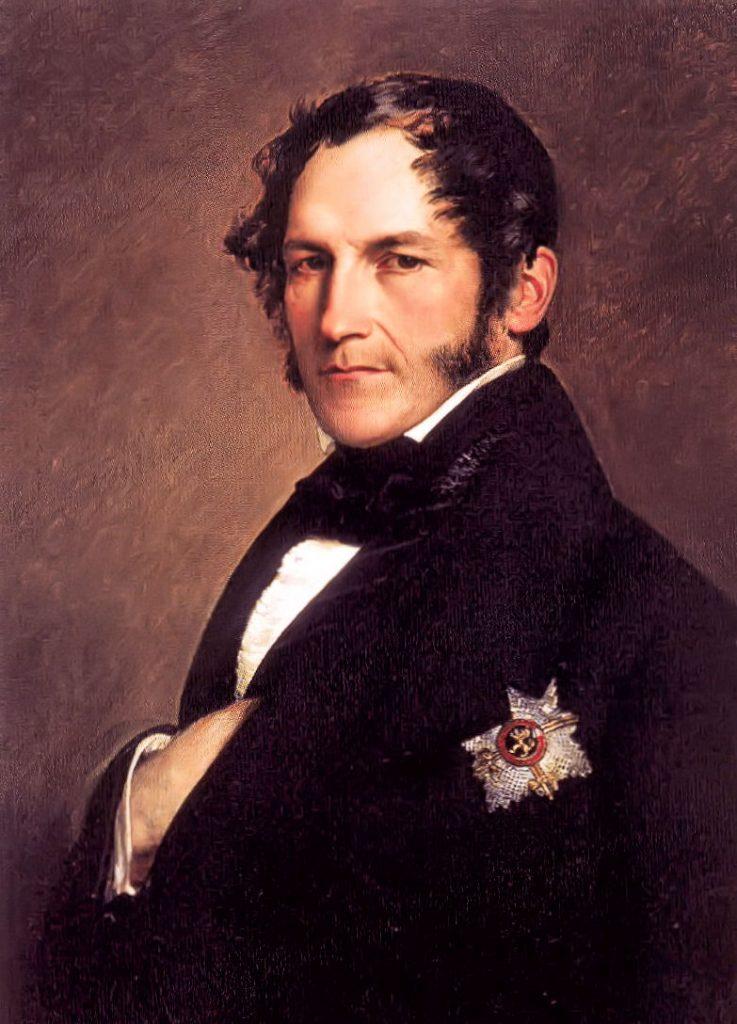

Leopold I was the first king of Belgium.
After the country gained its independence from the Netherlands on 4 October 1830, the Belgian National Congress, after considering several other candidates, asked Leopold to become king of the newly formed country. He accepted and became “King of the Belgians” on 26nd June 1831. He swore allegiance to the constitution in the Royal Palace in Brussels on 21st July 1831. This day became the Belgian national holiday.
Leopold George Christian Frederick of Saxe-Coburg and Gotha was born in Coburg on 16th December 1790 into a German dynasty which had influential connections with royal families throughout Europe. After a brilliant military career, in which he fought Napoleon, Leopold settled in England where he was appointed field-marshall. He was a very handsome, shrewd and dignified man with an appealing personality.
In 1816 he married the heiress to the British throne, Princess Charlotte of Wales, the daughter of the Prince Regent, the future George IV of England. Sadly his first marriage did not last long, for Charlotte died in 1817 after giving birth to a stillborn child. Had she lived, she would have become Queen of England in 1830 on the death of her father, and Leopold would have been British Prince Consort instead of King of the Belgians.
On 9 August 1832 he married again. His second wife was Louise-Marie, daughter of Louis-Philippe, King of France. They had four children, of which his second son Leopold would later succeed him as Leopold II.
Leopold’s sister Victoria (of Saxe-Coburg-Saalfeld) married the Duke of Kent (Prince Edward, brother of George IV) thereby connecting Leopold once again with the British royal family. Their daughter Victoria was the future Queen of England. Leopold became her favourite uncle and a sort of father figure. In 1840 he arranged her marriage to his nephew Albert, son of his brother Ernst I.
Despite economic difficulties in its early years, Belgium rose to ever greater heights of prosperity. This was the age of iron and steel. Innovations and the expansion of metal working led to lower prices which in turn led to vastly increased demand. Belgium was turning into an industrial giant. The king encouraged manufacturing and commerce. He was personally involved in promoting his country’s industrial revolution and one of his dreams, to build the first railway in continental Europe, became a reality with the opening of the railway line between Brussels and Mechelen on 5th May 1835.
In the mid 19th century a wave of revolutions surged through Europe after King Louis-Philippe of France was deposed in 1848. But Belgium passed through these turbulent years in comparative tranquillity. King Leopold was a model ruler, popular, moderate and diplomatic. Serious and hard-working, he was noted for his integrity, ability and wisdom and succeeded in giving the new nation a sense of unity. Belgium remained neutral, chiefly thanks to Leopold’s diplomatic efforts.
In 1850, Leopold again lost a young wife, when Queen Louise-Marie died of tuberculosis at the age of 38. On 10th December 1865, the king himself died in Laken. He was buried in the royal vault of the Church of Our Lady, Laken Cemetery, Brussels, Belgium.